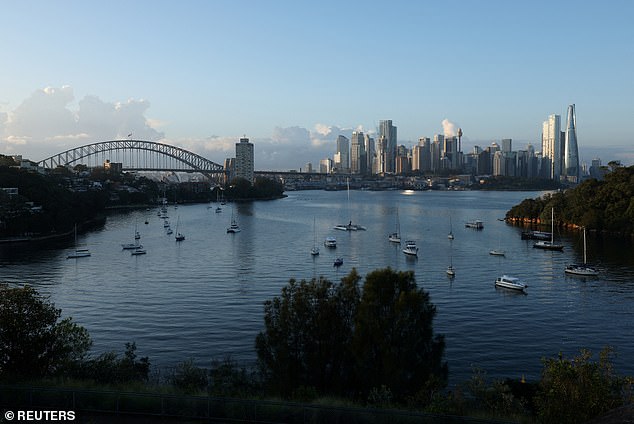Share this @internewscast.com
Five Australian cities have been included in the list of the top 15 most unaffordable places in the world to buy a home.
This week’s release of the 2025 Demographia International Housing Affordability report identified Sydney, Melbourne, Brisbane, Adelaide, and Perth as some of the priciest cities.
Sydney was named the second most unaffordable city overall, second only to Hong Kong.
Adelaide ranked sixth, Melbourne ninth, Brisbane 11th, and Perth 14th.
While Perth was rated ‘severely unaffordable,’ the other four capitals were classified as ‘impossibly unaffordable’.
‘It is remarkable that these markets are less affordable than widely recognised world cities like New York, London, or Chicago,’ the report stated.
This annual report, issued by Chapman University’s Centre for Demographics and Policy, analyzes the relationship between typical house prices and median household incomes in 95 key housing markets across Australia, New Zealand, the UK, the US, Canada, China, Ireland, and Singapore.
Report principal Wendell Cox said Sydney had consistently remained among the least affordable housing markets globally.

Sydney has ranked as the second least affordable city in the world, behind only Hong Kong

Sydney, Melbourne, Brisbane, Adelaide and Perth all featured in the top 15 least affordable cities worldwide
‘Sydney had the first, second or third least affordable housing of any major market in 16 of the last 17 years,’ he wrote.
‘Even the smallest Australian market, Adelaide, endures an impossibly unaffordable median multiple of 10.9, ranked 90th among the 95 markets.’
The study observed that affordable home ownership for middle-income families, once prevalent in developed nations, had notably decreased as property values outpaced household income growth from the 1990s onward.
Researchers looked to understand why the some markets were so hot.
‘Among high-income nations, middle-income homeownership was once widespread, with house prices aligned with incomes,’ the report read.
‘Since the 1990s, however, prices have surged—especially in markets governed by urban containment strategies early (e.g., San Francisco, Sydney, London) —with homes now costing 9–15 times household income.’
Centre director Joel Kotkin attributed the trend to restrictive planning and land-use policies.
‘The Demographia report has shown that where such policies predominate, for example in the UK, California, Washington, Oregon, Colorado, New Zealand, Australia and much of Canada, the results are disastrous, at least for potential homebuyers,’ Mr Kotkin said.

Urban containment policies have driven up land prices on the edges of major Australian cities, the report stated
Researchers pointed to ‘urban containment’ strategies – including greenbelts, zoning restrictions and growth boundaries – as key drivers of unaffordability, particularly when such policies limit housing expansion on the urban fringe.
‘Nearly all severely unaffordable housing markets follow the urban containment model,’ Mr Cox said.
‘The resulting land scarcity inflates prices, particularly near urban growth boundaries.’
The report found that in markets such as San Francisco, Sydney and London, median house prices had reached between nine and 15 times the median household income.
Land value was identified as the most significant cost in these areas, with prices spiking around areas where development was allowed near formerly restricted zones.
The researchers also questioned whether building high-density housing in existing urban areas actually improved affordability.
They warned that if such housing remained too expensive or unattractive to most middle-income earners, the underlying issue would stay unresolved.








